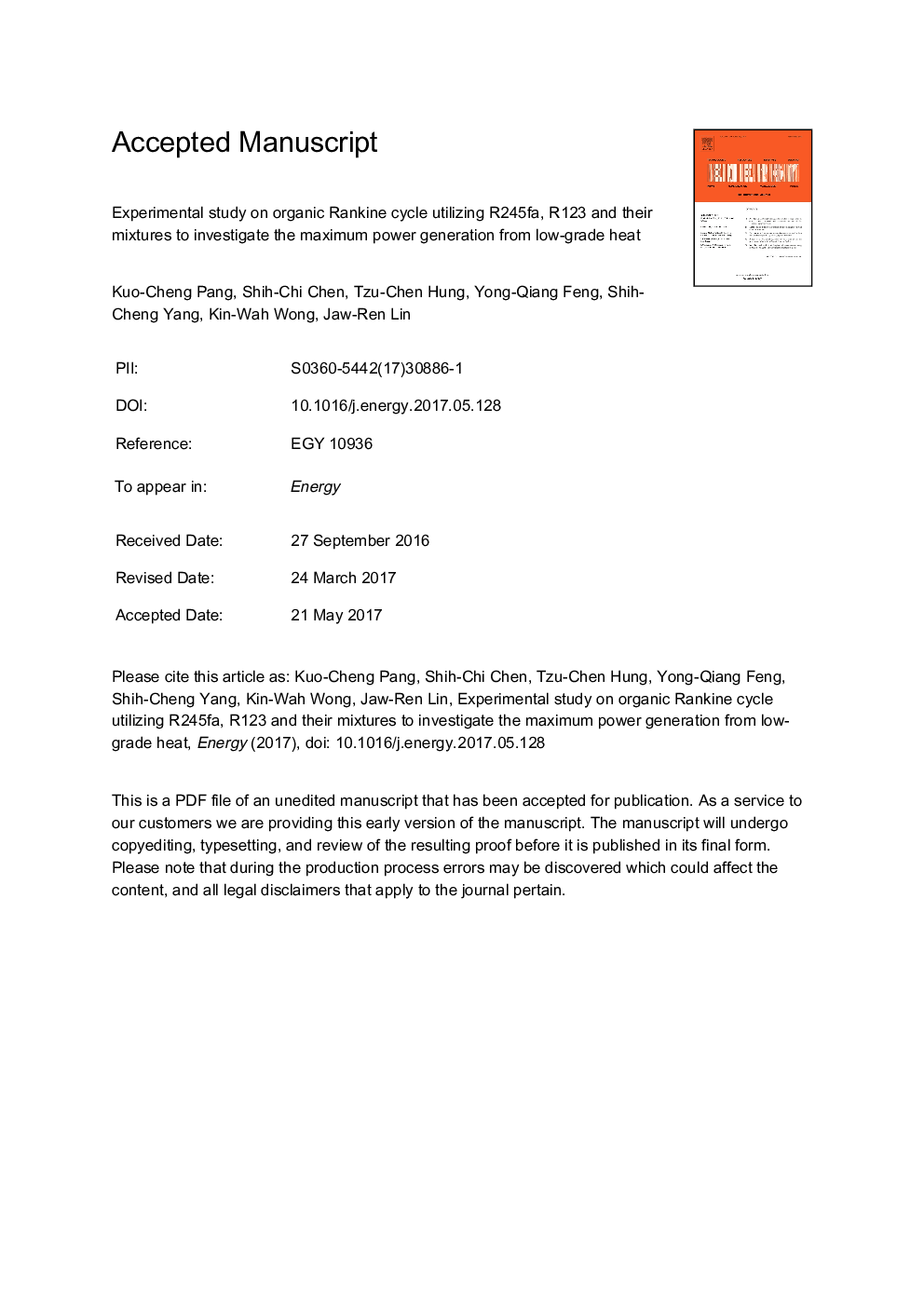| Article ID | Journal | Published Year | Pages | File Type |
|---|---|---|---|---|
| 5476586 | Energy | 2017 | 44 Pages |
Abstract
The main purpose of this paper is experimentally comparing of organic Rankine cycle (ORC) system, by using R245fa, R123 and their mixtures to generate maximum net power on simulated low-temperature industrial waste heat. Four mass fractions of R245fa:R123 have been injected into the system with the ratios of 1:0, 2:1, 1:2 and 0:1 to test the system performance separately. To imitate industrial low-temperature waste heat, the heat source temperature is fixed at 110 °C and 120 °C with specified mass flow rate of heat source. Focusing on the change of mass flow rate of working fluid and expander inlet superheating, experiment results show that the system heat input increases when mass flow rate of working fluid increases. All four mass fractions of working fluids generate maximum net power when the system mass flow rate is around 0.15 kg/s. The case of pure R245fa generates a maximum net power 1.56 kW with an electrical efficiency of about 3.9% when heat source temperature is fixed at 110 °C. While, the case of mixture R245fa:R123 = 2:1 generates a maximum net power 1.66 kW with an electrical efficiency of about 4.4% when heat source temperature input is fixed at 120 °C.
Related Topics
Physical Sciences and Engineering
Energy
Energy (General)
Authors
Kuo-Cheng Pang, Shih-Chi Chen, Tzu-Chen Hung, Yong-Qiang Feng, Shih-Cheng Yang, Kin-Wah Wong, Jaw-Ren Lin,
